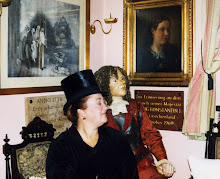
John Quelch, professor at Harvard Business, believes marketers need a new lens to view their customer segments. That traditional segmentation studies should be considered obsolete for the times.
Why? The length and depth of this recession. It's changing buying behaviors in ways that were not seen in previous downturns. Quelch believes a more relevant way to segment for these times should be based on emotions and behaviors related to the recession. His study at Harvard revealed four consumer types for today:
Slam on the Breaks: These consumers are devastated by recession, a lost job, or know someone who has lost job. They saw the meltdown of their 401K, and are now buying nothing but the necessities.
Slam on the Breaks: These consumers are devastated by recession, a lost job, or know someone who has lost job. They saw the meltdown of their 401K, and are now buying nothing but the necessities.
Pained but Patient: These are the optimists, looking to the longer-term, they are adjusting short-term buying behaviors. They look at the essentials, like basic food products and toothpaste, and ask if there’s a way to save a little money. They are the folks moving from organics to non-organics or to private labels. They may decide to indulge less in treats (in less quantity or frequency). When it comes to postbonables (durables), they are hiring someone to repair to get another year or two of use. (just read that cobblers are seeing big increases in biz). They are cutting back on expandables (like vacations).
Live for Todays: Skewed to young, urban singles, they haven’t saved much money yet so they haven’t lost much. They will carry on with fun-oriented lifestyles, unless they lose their job.
Comfortably Well: They have a financial cushion to see them through recession, carrying on as normal but not exhibiting (or hiding) their ostentatious consumption to avoid the label of “well-off.”
Quelch's segmentation framework categorized types of purchases into: essentials (food and personal goods), treats, postponables (eg, durable goods) and expandables (eg, vacations).
Danger for marketers: the longer the recession, the longer time consumers have to create new, habitual buying behaviors and not revert back to their old buying patterns.
Source: Harvard Business Review, April 2009 and video interview with Professor John Quelch (illustration from HBS website).




No comments:
Post a Comment